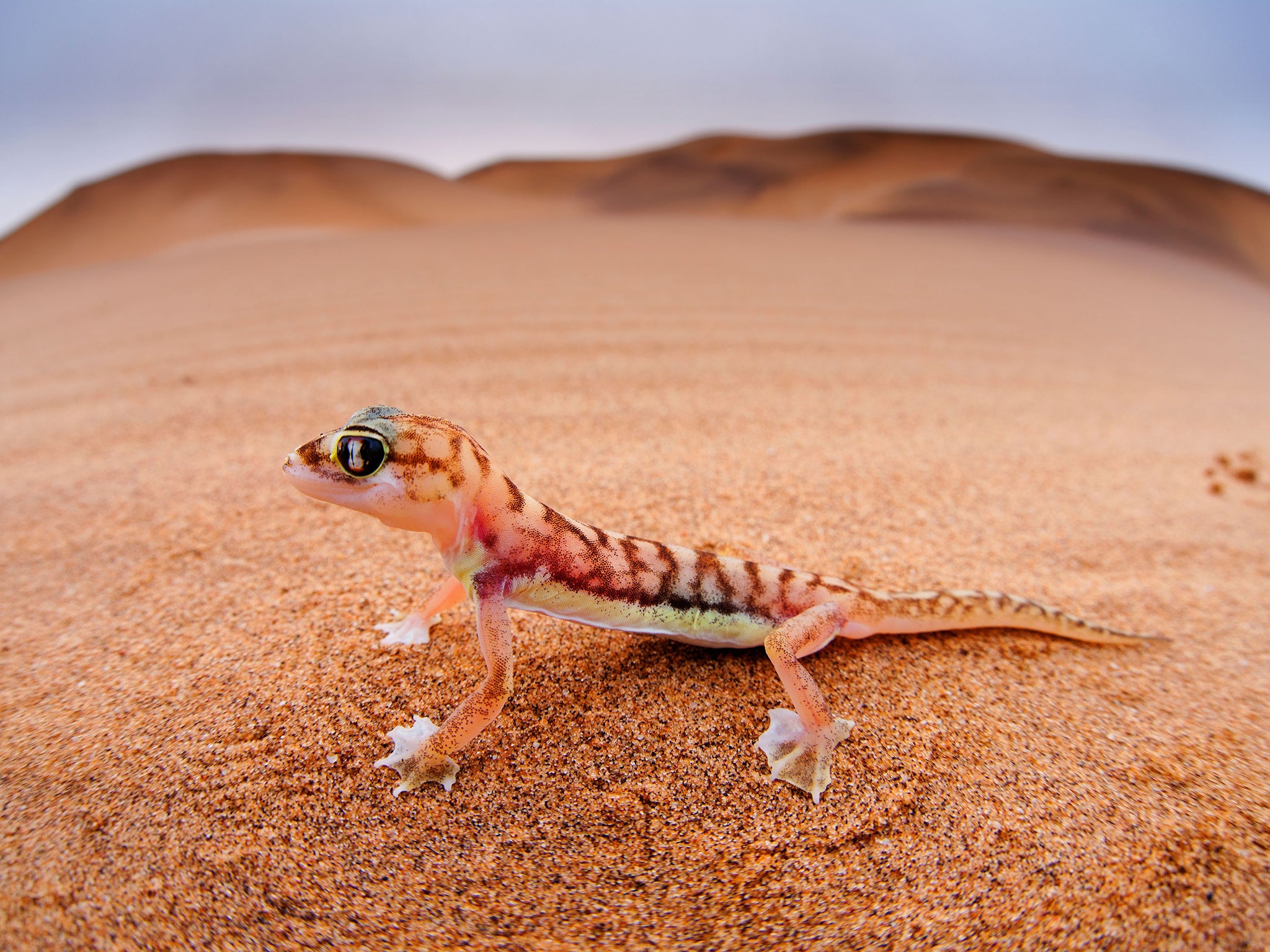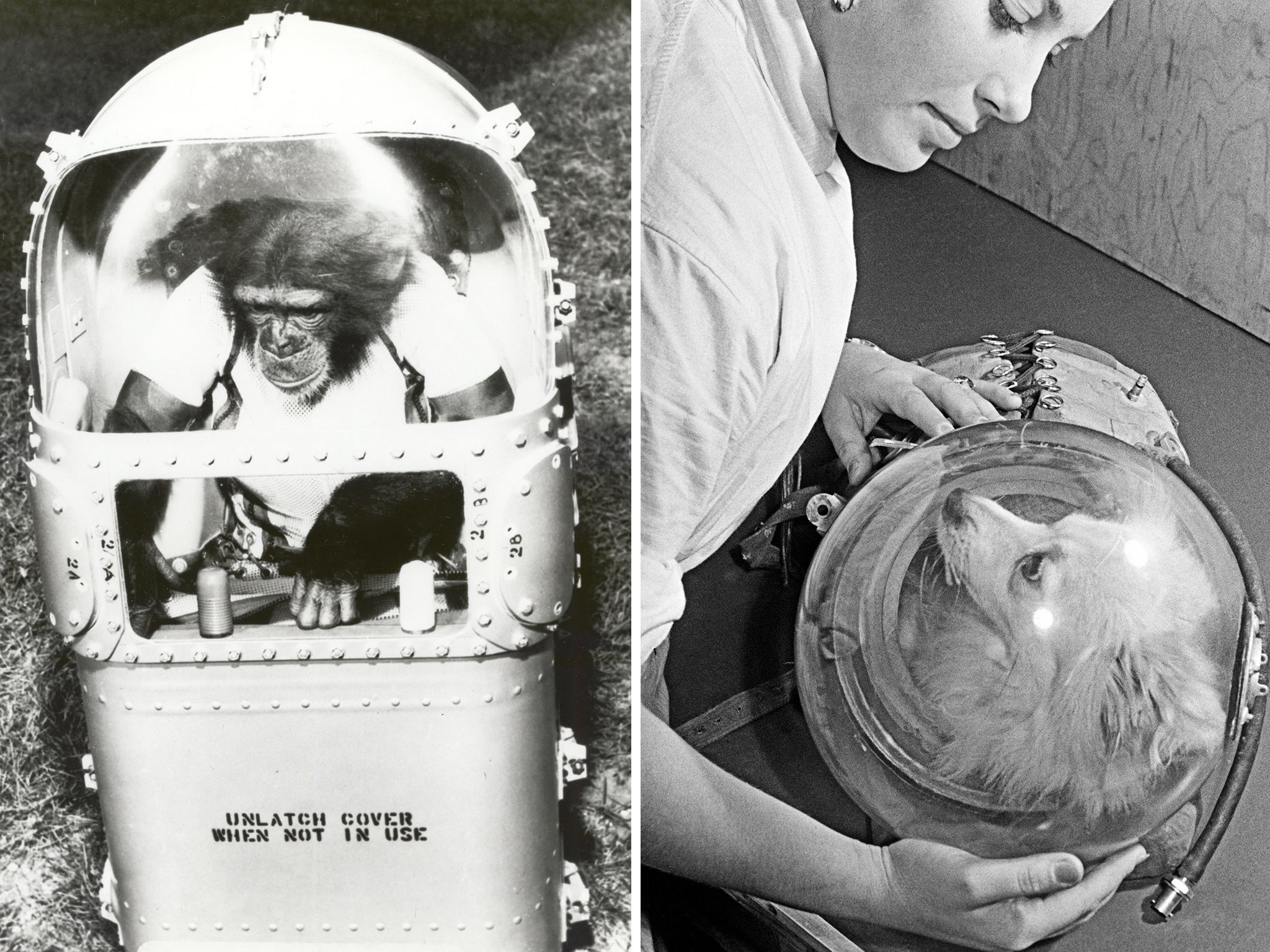Animal astronauts: Geckos, chimps and dogs pay a high price for mankind's urge to explore space
Americans favour monkeys; Russians prefer dogs. It rarely ends well - as the death of a group of reptiles on a satellite reminds us. Steve Connor on sending animals into orbit

Your support helps us to tell the story
From reproductive rights to climate change to Big Tech, The Independent is on the ground when the story is developing. Whether it's investigating the financials of Elon Musk's pro-Trump PAC or producing our latest documentary, 'The A Word', which shines a light on the American women fighting for reproductive rights, we know how important it is to parse out the facts from the messaging.
At such a critical moment in US history, we need reporters on the ground. Your donation allows us to keep sending journalists to speak to both sides of the story.
The Independent is trusted by Americans across the entire political spectrum. And unlike many other quality news outlets, we choose not to lock Americans out of our reporting and analysis with paywalls. We believe quality journalism should be available to everyone, paid for by those who can afford it.
Your support makes all the difference.The death of a group of geckos on board the Russian Photon-M4 satellite, which returned to Earth earlier this week, is the latest in a long history of animal sacrifices made in the name of space exploration. The reptiles, famous for being able to walk upside down on a ceiling, were part of a "sex experiment" to see how they would cope with mating in a low-gravity environment.
However, the fact that their bodies were partly mummified suggested that they must have died a week or so before re-entry (no, not that kind), possibly of cold as a result of a failure of the onboard electronics, according to a spokesman for the Institute of Medical and Biological Problems in Moscow.
"Hypothermia is not the main possible cause but only one of the options. Others include a possible malfunction of the onboard equipment and life-support systems," the spokesman told the ITAR-TASS news agency.
Interestingly, a group of drosophila fruit flies that were part of the same biological payload survived the trauma and were even able to breed. It is not the first time that some animals have shown greater innate resilience than others to the extreme environment of space.
The idea of sending animals into space began in 1948 when Albert, a rhesus macaque monkey, was strapped in to a V-2 rocket launched from the White Sands missile base in New Mexico. Albert did not survive. Neither did the three other "Alberts" who flew on successive V-2 missions. Given the sensitivity of rocket testing at that time, none of these primate space pioneers became household names.
That changed in 1952 when a monkey called Yorick, along with 11 mice, survived a US Air Force missile flight to an altitude of 236,000 feet – more than seven times the height of a commercial flight. During the 1950s both the US and the USSR experimented with many different animals in space, but while the Americans tended towards primates, the Russians seemed fond of using dogs.
Many female canines took part in the frantic race to build up the Soviet space programme – it was said to be easier to collect the waste of bitches. They had names like Dezik and Tsygan (meaning "Gypsy"), Smelya ("Bold") and Malyshka ("Little One"). Smelya ran off the day before launch and the Russians thought she had been eaten by the wolves that roamed the Siberian launch site, but she returned a day later and the mission resumed.

One of the earliest heroes of the Soviet space programme was a dog called Laika (meaning "Barker") who in 1957 became the first animal to orbit the Earth aboard Sputnik 2. Laika, unfortunately, did not survive and the Sputnik finally burnt up in the outer atmosphere in April 1958, five months after launch.
While the Americans were experimenting with primates such as Ham, the first chimp in space, and Gordo, a squirrel monkey, the Russians continued to work with dogs as the Space Race really took off in the 1960s. Belka ("Squirrel") and Strelka ("Little Arrow") became household names in the USSR – not least because Strelka subsequently gave birth to a litter of puppies, one of which was given to President John F Kennedy as a present for his children.
Both sides in the Space Race would eventually use a menagerie of animals to test the effects of weightlessness and ionising radiation from space – rabbits, mice, rats, fruit flies, turtles, quail eggs and nematode worms were just some of the species used.
But perhaps the most amazing observation of all came in 2008 when scientists discovered that tiny creatures known as tardigrades, or "water bears", can survive not just inside a spacecraft, but in the cold vacuum of space itself. Tardigrades, which live in the harsh environment of household gutters, have turned out to be the true survivors of space exploration. µ
Join our commenting forum
Join thought-provoking conversations, follow other Independent readers and see their replies
Comments